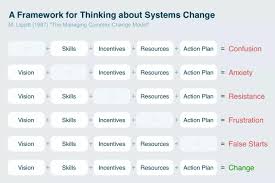The Power of Movements: Driving Change and Inspiring Action
In today’s world, movements play a crucial role in shaping society, driving change, and inspiring action. From civil rights movements to environmental activism, these collective efforts have the power to challenge the status quo and create lasting impact.
What Defines a Movement?
A movement is a group of individuals who come together around a common cause or goal. It is characterized by shared values, passion, and a desire for change. Movements can take various forms, from peaceful protests to online campaigns, but they all share the common purpose of advocating for progress and social justice.
The Impact of Movements
Movements have historically played a significant role in bringing about social and political change. They have been instrumental in ending segregation, securing equal rights for marginalized groups, and raising awareness about pressing issues such as climate change and inequality.
By mobilizing people from diverse backgrounds and uniting them under a shared vision, movements have the power to amplify voices that may otherwise go unheard. They provide a platform for individuals to collectively demand action from those in power and hold institutions accountable for their actions.
Inspiring Action
One of the most powerful aspects of movements is their ability to inspire action. By highlighting injustices, sharing personal stories, and organizing grassroots initiatives, movements can spark empathy and solidarity among people around the world.
Whether it’s through street demonstrations, social media campaigns, or community organizing efforts, movements have the potential to galvanize individuals into taking meaningful steps toward positive change. They remind us that each person has the capacity to make a difference and that collective action can lead to transformative outcomes.
Joining the Movement
If you are passionate about a particular cause or issue, consider joining a movement that aligns with your values. Whether you choose to participate in rallies, volunteer your time, or spread awareness online, your involvement can contribute to the momentum of change that movements strive to achieve.
Remember that every voice matters in a movement. By standing together with others who share your beliefs and aspirations, you become part of a larger force for good that has the potential to shape the future for generations to come.
In Conclusion
Movements are not just about creating noise; they are about effecting real change. By harnessing the collective power of individuals who are committed to making the world a better place, movements have the capacity to drive progress forward and inspire hope for a more equitable and just society.
Understanding Movements: Definitions, Historical Examples, Participation, Societal Impact, and the Role of Technology
- What is a movement and how is it defined?
- What are some examples of successful movements in history?
- How can I get involved in a movement that aligns with my values?
- What impact do movements have on society and policy change?
- How do movements use social media and technology to mobilize supporters?
What is a movement and how is it defined?
A movement is a collective effort by a group of individuals who come together around a shared cause or goal, driven by common values and a desire for change. It is defined by the unity of purpose and the mobilization of people to advocate for progress and social justice. Movements can take various forms, such as protests, campaigns, or grassroots initiatives, all aimed at raising awareness, challenging the status quo, and influencing societal norms. At its core, a movement represents a powerful force for driving positive transformation and inspiring action among individuals who seek to make a difference in the world.
What are some examples of successful movements in history?
Throughout history, there have been numerous examples of successful movements that have left a lasting impact on society. The civil rights movement in the United States, led by figures like Martin Luther King Jr., successfully fought against racial segregation and discrimination, ultimately leading to significant legislative changes. The women’s suffrage movement fought for and achieved the right for women to vote, paving the way for greater gender equality. The environmental movement has raised awareness about climate change and conservation efforts, influencing policy decisions and encouraging sustainable practices. These movements, among many others, serve as powerful reminders of the collective strength and determination of individuals coming together to drive positive change in the world.
How can I get involved in a movement that aligns with my values?
To get involved in a movement that aligns with your values, start by researching different organizations and groups that focus on causes you are passionate about. Look for local chapters or online communities where you can connect with like-minded individuals. Attend events, rallies, or meetings to learn more about the movement and how you can contribute. Volunteer your time, skills, or resources to support the cause. Share information and raise awareness on social media or through conversations with friends and family. By taking these steps, you can actively participate in a movement that resonates with your values and make a positive impact on the issues that matter to you.
What impact do movements have on society and policy change?
Movements have a profound impact on society and policy change by amplifying voices, raising awareness, and mobilizing collective action. These grassroots efforts bring attention to pressing issues, challenge existing norms, and push for systemic reforms. By uniting individuals around shared values and goals, movements can influence public opinion, hold policymakers accountable, and ultimately drive meaningful change in laws, regulations, and social attitudes. Through their persistence and dedication, movements have the power to shape the course of history and create a more just and equitable society for all.
How do movements use social media and technology to mobilize supporters?
Movements leverage the power of social media and technology to mobilize supporters by utilizing various online platforms to spread their message, engage with a wider audience, and coordinate collective action. Through social media channels like Facebook, Twitter, and Instagram, movements can reach a vast number of individuals quickly and effectively, sharing updates, organizing events, and amplifying their cause. Additionally, technologies such as online petitions, crowdfunding platforms, and virtual meeting tools enable movements to streamline communication, gather support from diverse communities, and mobilize supporters in real-time. By harnessing the capabilities of social media and technology, movements can create a digital ecosystem that fosters engagement, solidarity, and ultimately drives meaningful change.




